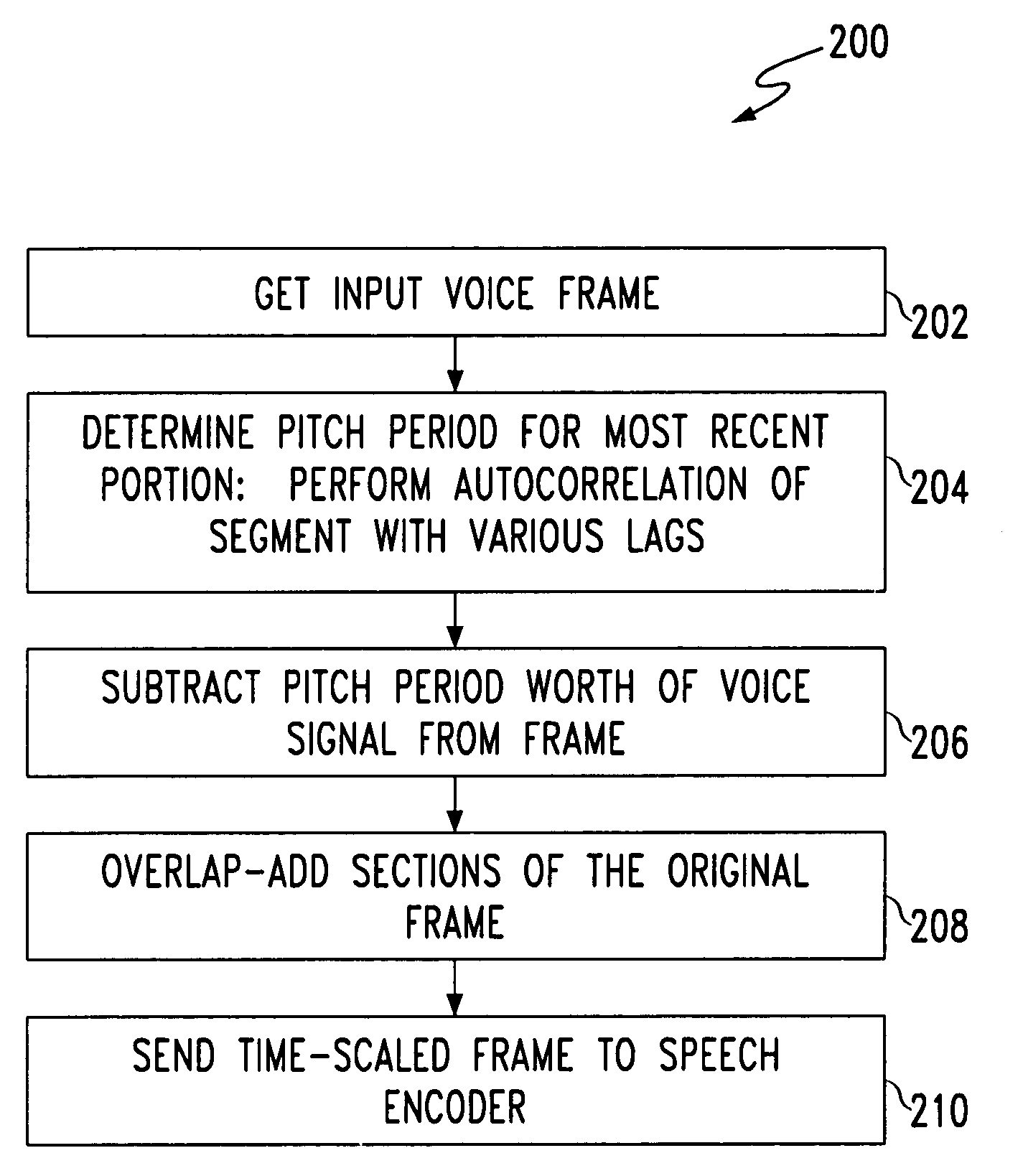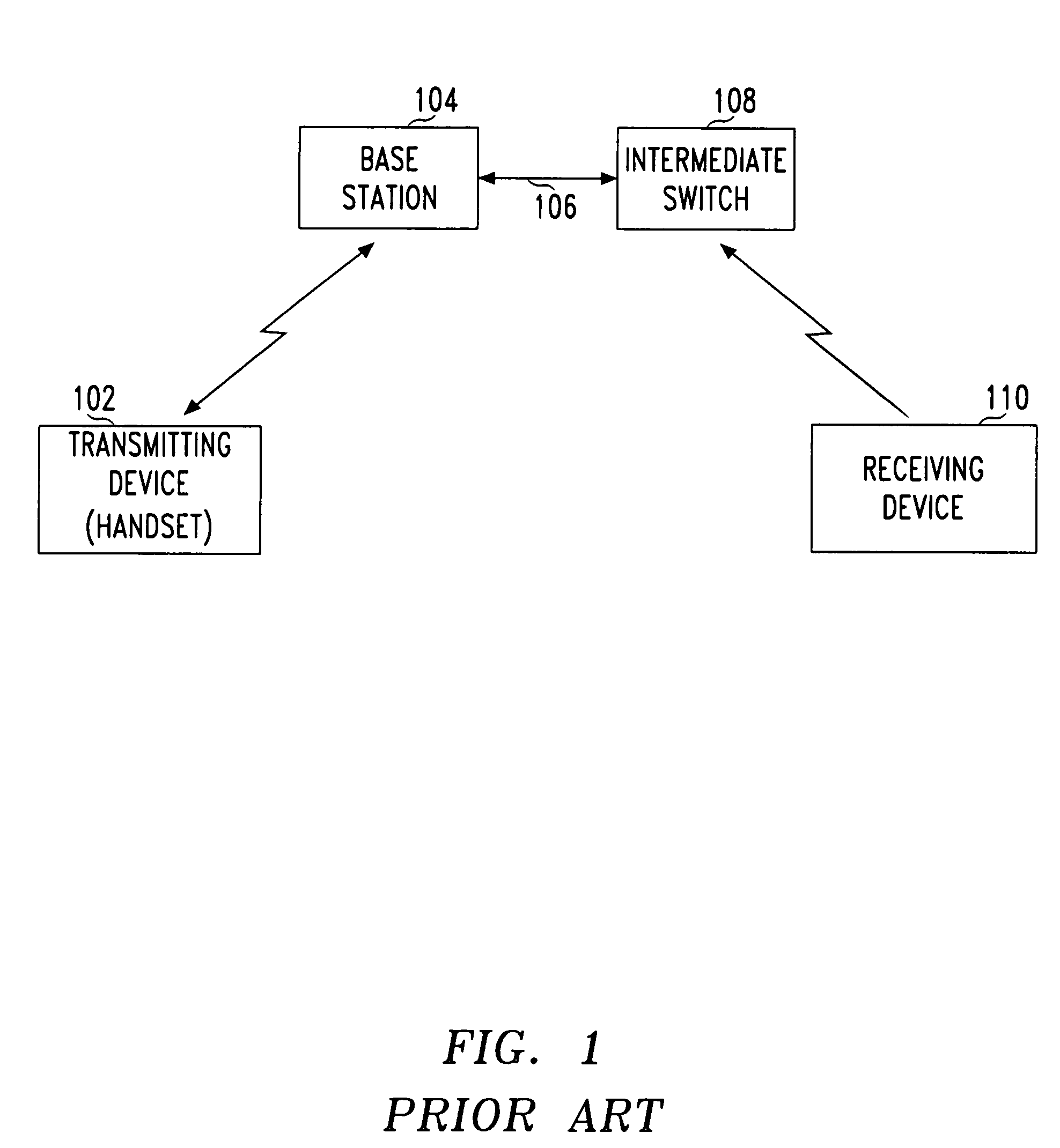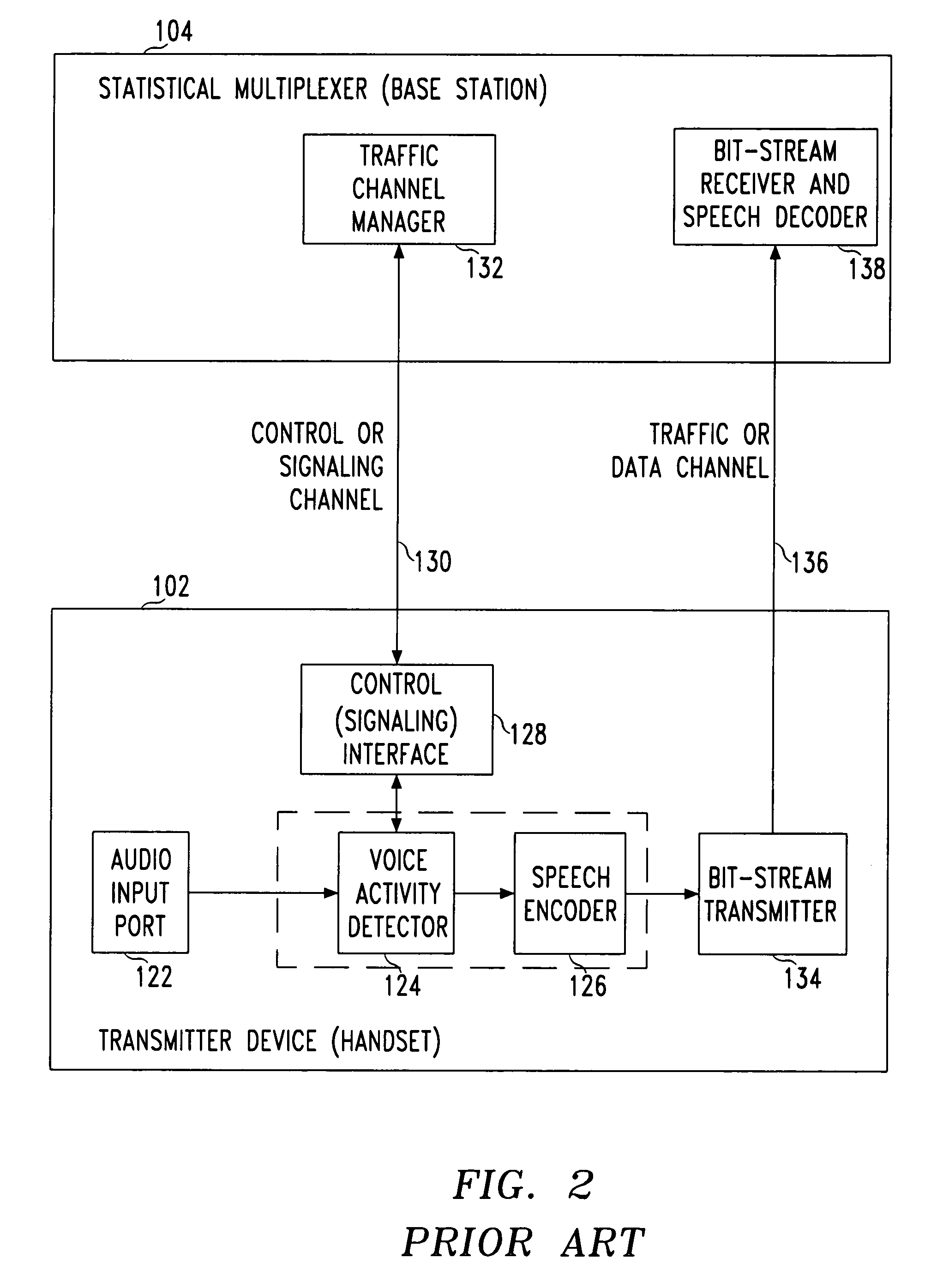Method and apparatus for reducing access delay in discontinuous transmission packet telephony systems
a technology of discontinuous transmission and access delay, which is applied in the field of method and apparatus for reducing access delay in discontinuous transmission packet telephony system, can solve the problems of affecting the dynamic of interactive conversations, breaking the overall delay budget of the system, and hurting intelligibility
- Summary
- Abstract
- Description
- Claims
- Application Information
AI Technical Summary
Problems solved by technology
Method used
Image
Examples
Embodiment Construction
[0017]With reference to the communication device 140 and the base station 142 of FIG. 3, a speaker speaks into the AIP 150 which, in turn, outputs frames of speech. The frames of speech are input to both the Voice Activity Detector (VAD) 152 and the Access Delay Reducer (ADR) 154. The VAD makes a binary yes / no decision as to whether or not each input frame contains voice activity. If voice activity is detected, the speech frames are encoded by the speech encoder 156 and transmitted by the bit-stream transmitter 158 via the traffic channel 160 to the bit-stream receiver 162 of the base station. On the other hand, when the VAD 152 detects no voice activity, the bit-stream transmitter 158 transmits no voice signal, although it may still transmit frames for comfort noise generation (CNG), such as described in U.S. Pat. No. 5,960,389, during such periods of inactivity so that the background noise at the receiver matches that at the transmitter.
[0018]The VAD 152 outputs an active signal, ...
PUM
 Login to View More
Login to View More Abstract
Description
Claims
Application Information
 Login to View More
Login to View More - R&D
- Intellectual Property
- Life Sciences
- Materials
- Tech Scout
- Unparalleled Data Quality
- Higher Quality Content
- 60% Fewer Hallucinations
Browse by: Latest US Patents, China's latest patents, Technical Efficacy Thesaurus, Application Domain, Technology Topic, Popular Technical Reports.
© 2025 PatSnap. All rights reserved.Legal|Privacy policy|Modern Slavery Act Transparency Statement|Sitemap|About US| Contact US: help@patsnap.com



